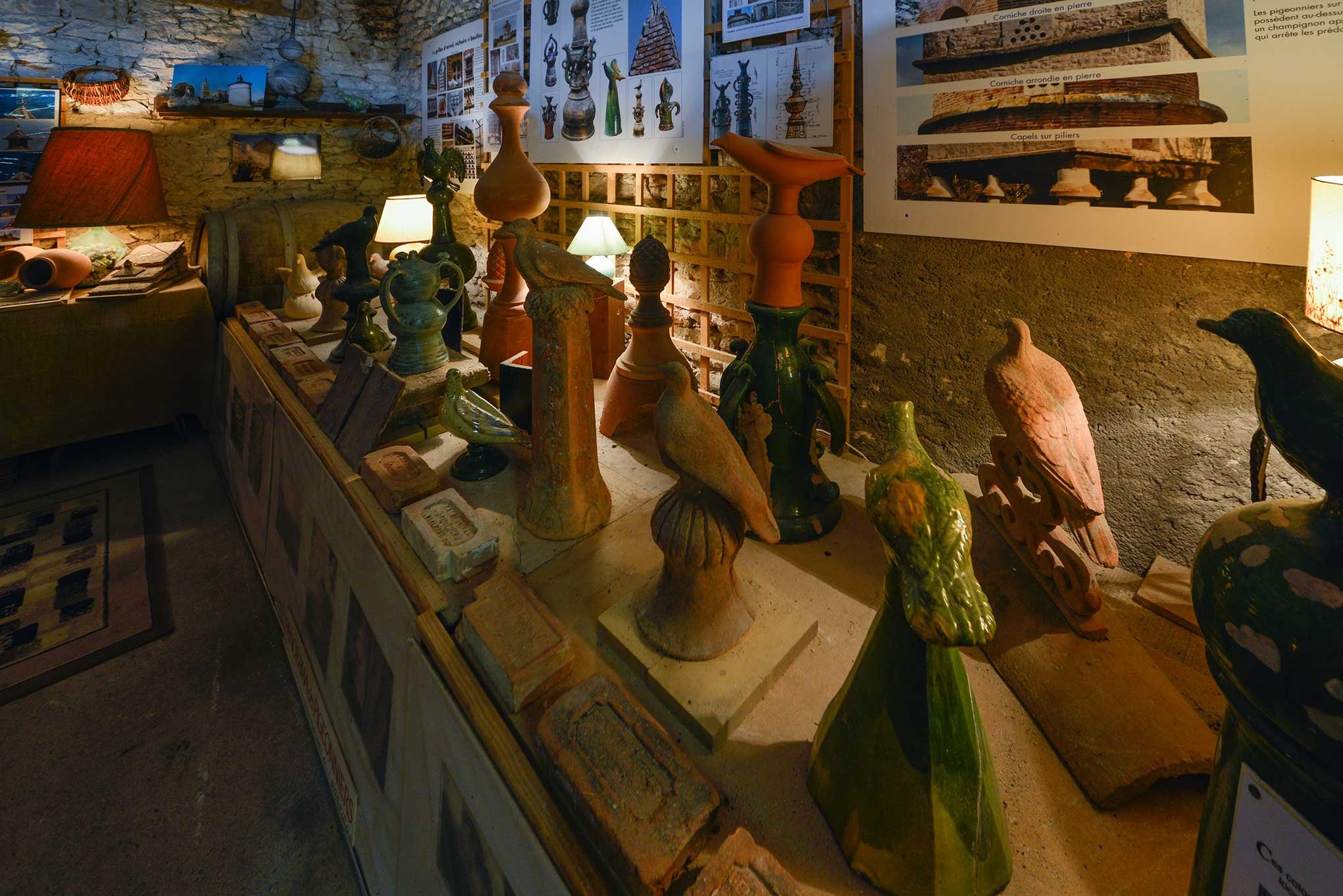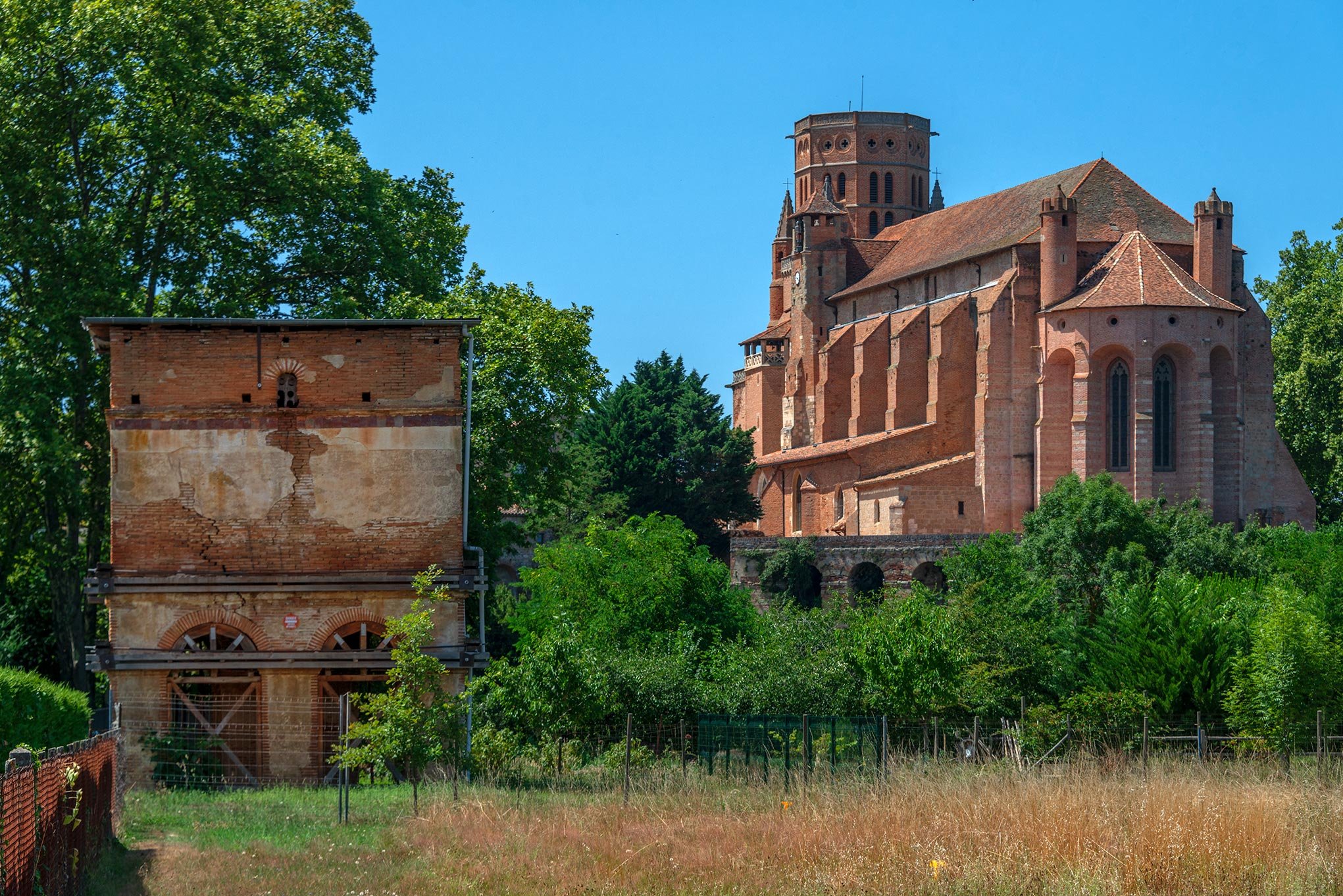LUCIEN
OBSESSED WITH PIGEONS
Michel Lucien
Lombers
More photos to come!
Michel Lucien has been obsessed by pigeonniers for over 30 years. Through his books, lectures, media interviews, museum, fundraising activities and work with departmental tourist organisations, he has done more than anyone else to raise awareness of Occitanie’s pigeonniers. Here, he recounts the challenges he encountered when he vowed to save the oldest pigeonnier in the Tarn.
I first saw the pigeonnier of Le Travet in 2008. Decades of neglect had left it in a sorry state, but I instantly fell under its charm. Perhaps I could see what no one else could see. Perhaps I was the only person who recognised the grandeur behind the crumbling façades and fallen roof. The pigeonnier is located in a commune called Labastide-Saint-Georges, separated from the much larger town of Lavaur by the river Agout. Originally, the pigeonnier belonged to the Château du Travet which was the summer residence of the bishops of Castres. Built from brick in 1614, this is the oldest pigeonnier in the Tarn. At ground level, each of its four sides is supported by twin arcades – there is only one other like this in the whole department. Beneath the arcades, a central brick pillar contains the staircase that leads to the upper level.
I tried to learn more about Le Travet’s past, and I soon came across a photographer who lived nearby. He showed me several old pictures. In one, dating from the 1930s, a seemingly immaculate pigeonnier is surrounded by vines, and white rendering covers its brick façades. In a photo taken in 1950, the vines have gone and the pigeonnier is showing signs of distress. Patches of rendering have crumbled and, more seriously, one side of the pyramid roof has lost most of its slates, revealing the broken timbers beneath. Another picture from 1950 shows the interior: row upon row of terracotta pots are embedded in the mortar-lined walls to provide 500 nests for the pigeons.
Through further research, I discovered that since 1944 a succession of owners had applied for subsidies to save the building from further degradation. The pigeonnier had even been listed as a historic monument in 1952, but no works were ever carried out. By the time I saw it in 2008, the ravages of time had carried away the roof entirely, leaving the interior open to the weather, and I could see alarming cracks on three of the façades and in parts of the vaulted ceiling. Before long, the oldest pigeonnier in the Tarn would collapse, but I didn’t know how to save it. Nevertheless, I swore I would find a way.
I visited Le Travet from time to time, and one day I discovered that a young couple had bought the plot of land around the pigeonnier. The Roberts were going to build themselves a new home on the banks of the river, and the pigeonnier just happened to be in their garden. I got talking to them and said, why don’t we start an association to save it from ruin? While we tried to raise money, I provided some steel props which helped shore up parts of the vaulted ceiling. I went in search of help and money from the architects of Bâtiments de France [part of the Ministry of Culture responsible for protecting, maintaining and restoring historically important buildings]. They told me, it’s a Monument Historique, and if you do any work to the building you will have to use this type of brick, that type of timber… and I said, is it reasonable to put so many restrictions on the young couple who finally want to save the pigeonnier when neither you nor anyone else has taken any interest in it for the last 60 years?
Eventually, the local council gave the Roberts a grant for emergency repairs, and a group of enthusiasts including myself installed a temporary flat roof made of timber and corrugated iron. It was neither pretty nor authentic, but at least it made the building watertight. We also obtained quotes for a full restoration. The figures were horrifying: somewhere around €350,000. The Roberts decided to sell their pigeonnier to the commune of Labastide-Saint-Georges for the symbolic sum of one euro, and the mayor went in search of funding.
Every year, the French national lottery runs a scratch card game to raise money for restoration projects. In 2021, the pigeonnier of Le Travet was among the 100 sites selected to participate in this programme, and the result was a grant of €130,000. Additional funding will come from the council and other public bodies, and eventually, the objective is to put Le Travet firmly on the Tarn tourist trail. It gives me so much pleasure to have plucked Le Travet from obscurity, and to have launched it on the road to recovery so that it can be enjoyed by future generations.
























